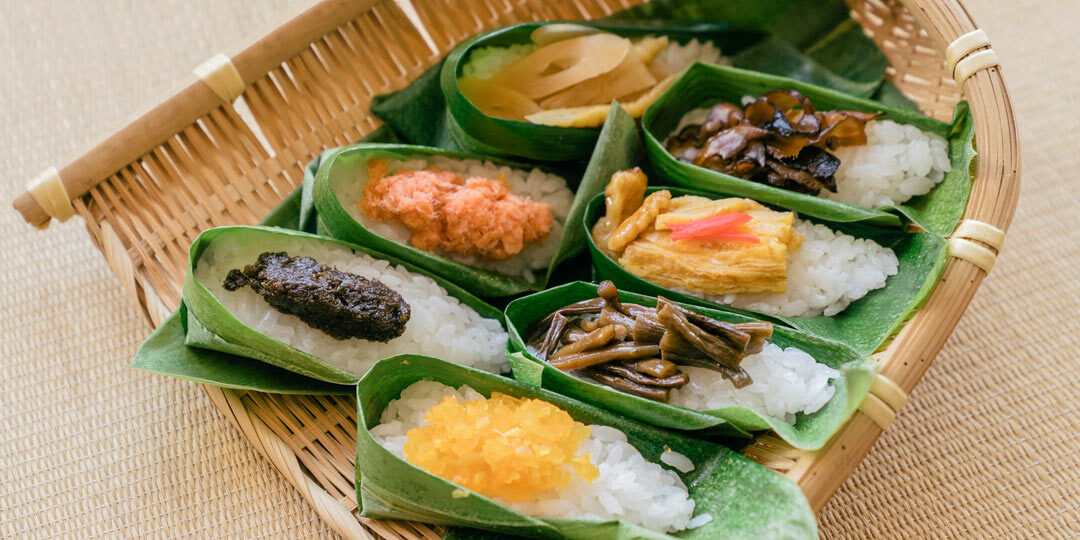20 Must-Try Foods While in Japan – Like Japan’s diverse geographical landscape, Japanese cuisine is a colorful festival of exotic and unique creations. A Matsuri that corporates the best of the East and West.
No visit to Japan should thus go without much enthusiastic feasting on the country’s many unique dishes and snacks! The following are 20 must-try foods when visiting the Land of the Rising Sun. Some of these are so beloved locally, they are considered synonymous with the cities they originated from.
Table of Contents
Ramen (ラーメン)
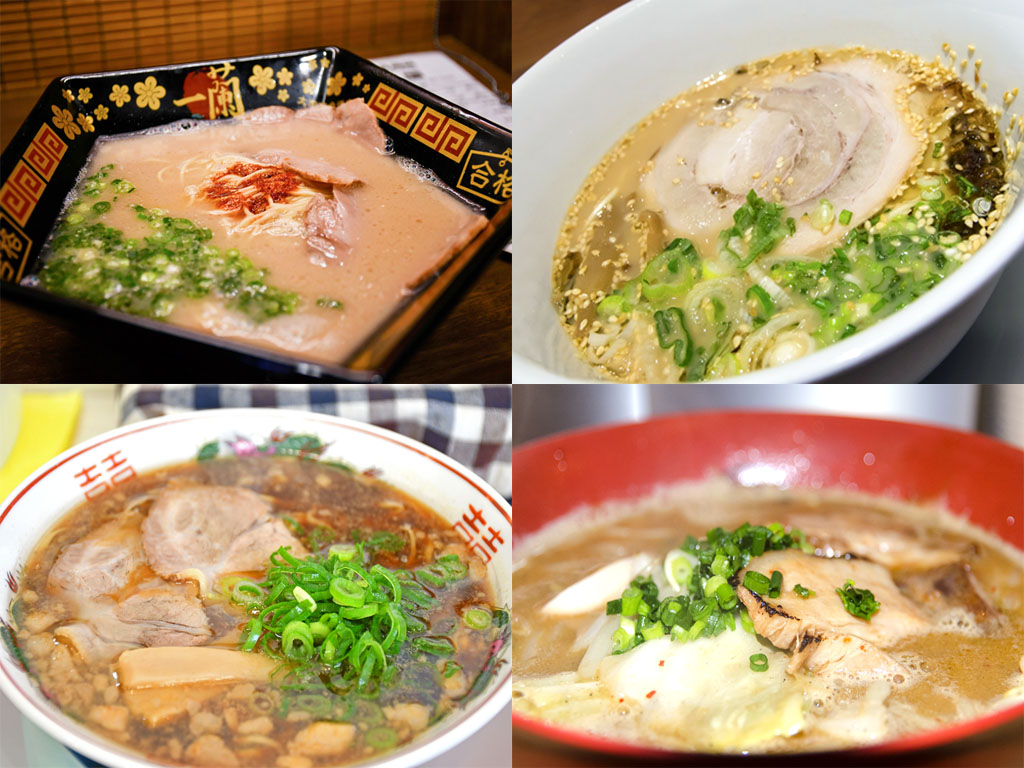
Ramen is the signature comfort food of Japan. A must-try when you’re visiting.
Ramen is the must-try comfort food of Japan. A soothing dish of Chinese-style wheat noodles served in a rich broth, it is arguably the most beloved noodle dish of the country too. The one you’d regularly see long queues for outside popular outlets.
Said to have originated in Yokohama Chinatown in the 19th century, there are today, various signature variations across the country. (Hint: An itinerary centered on ramen tasting could make for a great adventure) For example, Hakata Ramen is renowned for its rich Tonkotsu i.e. pork bone flavored broth. Up north in Hokkaido, Sapporo is famous for its intense Miso Ramen, which is often served with slices of butter.
Some smaller cities like Onomichi (Hiroshima Prefecture) have their own variations too. Onomichi Ramen is served in a brown, fish-based broth, and tastes quite unlike Hakata Ramen.
As a testimonial to this must-try food of Japan, there’s even a gorgeous Ramen museum in Yokohama. Here, you can heartily sample the key variations, while soaking in the ambiance of a Mid Showa Era downtown street.
Read also:
Okonomiyaki (お好み焼き)
Okonomiyaki means “cooked as you like it.” Not only is it a favorite dish of Japan, an Okonomiyaki meal counts among one of the more unusual dining experiences you can enjoy when visiting. One that is perfect when with friends.
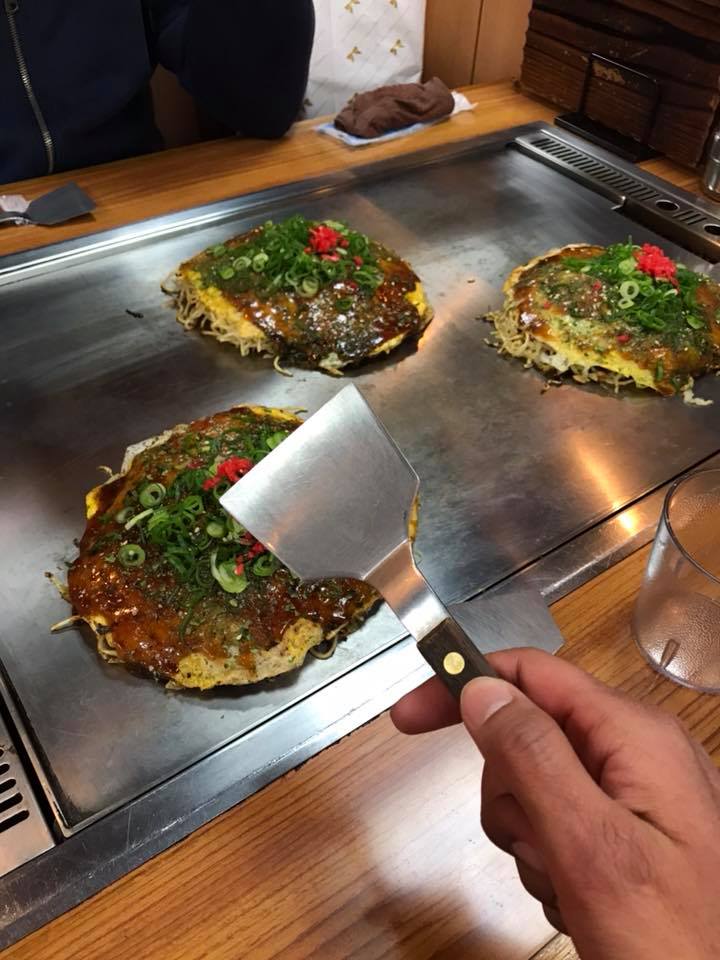
Okonomiyaki is not only delicious, it could be a fun experience when you cook it yourself at a specialty restaurant.
(Source: https://www.facebook.com/josh.santos.7967)
Essentially a savory pancake made from wheat-flour-based batter, the great fun of this dish is that you get to cook it yourself at an Okonomiyaki restaurant. Depending on your order, you also mix in shredded cabbage, yam, eggs, meat, seafood, or even cheese during the fun cooking process, which happens over a heated iron-plate at your table.
Regarded by some as the must-try soul food of Osaka, Okonomiyaki is also widely associated with Hiroshima City; some of the most popular Okonomiyaki restaurants are right within Hiroshima Station. For travelers not keen on the smoky cooking experience, worry not, many stalls served these unique pancakes cooked. Throughout the country, there are also various Okonomiyaki “villages,” where you can try a variety of creations.
Sushi (寿司)
There is perhaps no other name more associated with Japanese food than Sushi. This, in turn, leading to various misperceptions.
In short, Sushi is not just raw seafood. It is vinegared rice served with a slice of seafood. The accompaniment could also be cooked seafood or a slice of omelet. Lastly, the hand-rolled versions come with a variety of fillings. Today, such fillings include vegetables, meat, and even fruit, In the case of the famous California Maki, avocado is the key ingredient.

Rolled and Inari Sushi in a wooden takeaway pack.
An exquisite delicacy that is recognized as one of the pinnacles of Japanese fine dining, a sushi meal in a famous establishment could be expensive. Though assured to be an unforgettable and elegant experience.
Fortunately, Japanese supermarkets retail a vast variety of much more affordable options for travelers with tighter budgets. The packs sold here will not count amongst the best or the freshest. But for visitors new to this must-try food of Japan, these could be useful in deciding whether to splurge on an actual sushi meal at a proper restaurant.
Read also:
Tempura (天ぷら)

The Tempura style ensures what’s fried is crispy on the outside, but moist and soft on the inside.
Tempura refers to battered seafood, meat, or vegetables that have been deep-fried. Said to have been introduced into Japan by the Portuguese during the 16th century, Tempura differs from other deep-fried dishes by its distinctive appearance. The crust of Tempura fritters is almost always light yellow when served.
At sit-down restaurants, Tempura is also often served as the main dish of a set meal, or as one of the main courses of a Kaiseki i.e. multi-course banquet meal set. Lastly, and as like Sushi, Tempura fritters are sold at supermarket food sections too. These make for convenient and yummy snacks for both locals and travelers alike.
Takoyaki (タコ焼き)
Osaka is often described as the food capital of Japan, with two signature must-try foods associated with it. The above-mentioned Okonomiyaki is one. The other is Takoyaki i.e. wheat-flour balls with slices of octopus as fillings. Served with mayonnaise, Worchester Sauce, and bonito flakes.

A Takoyaki takeaway pack. It might look messy, but it’s an explosion of tastes that’d delight you right away.
Positively an institution within Osaka, and a tourist attraction, Takoyaki can be considered the must-try snack of the Kansai region, as well as standard Matsuri street food.
At Takoyaki “parks” such as the one right outside Universal Studios Japan, you could also try modern variations; for example, Takoyaki cooked with Chinese style sesame oil, or with bacon as filling. These delightful snacks could be described as the one street food of Japan no traveler should miss.
Melonpan (メロンパン)
Are you a lover of Japanese video games and Anime, particularly those with high-school settings? If so, you’d probably have heard of Melonpan, this uniquely named bun often depicted as a favorite food of Japanese students.
Translated as “Melon Bread,” pan being the Japanese word for Western bread, classic Melonpan actually contains no melon fillings, nor is it made from melon-flavored dough. There is no consensus over how the name came to be but it is usually taken to be because of the melon-like shape.
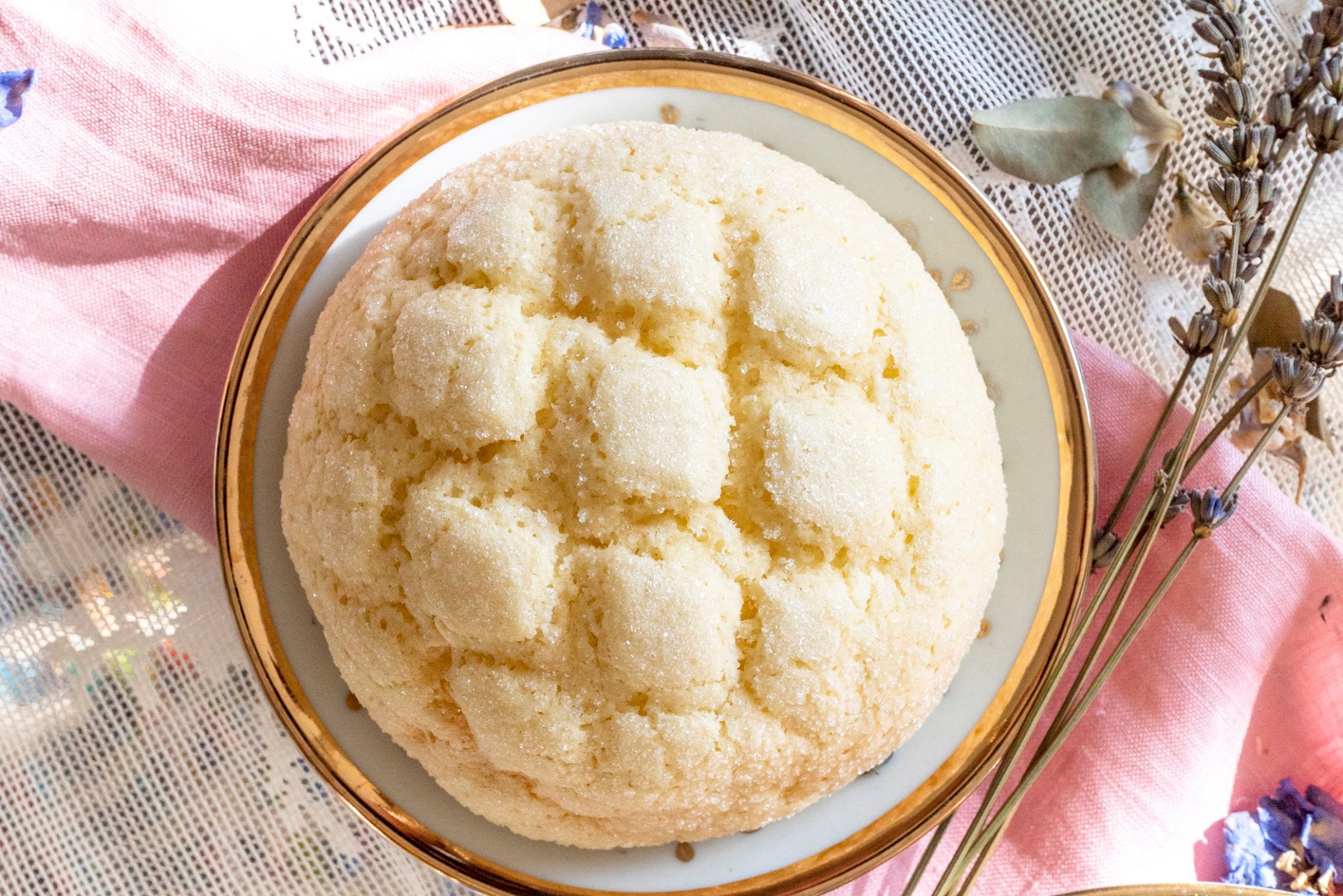
A freshly-baked Melonpan is absolutely heavenly. (Source: https://www.facebook.com/bellesbreadcolumbus/)
Absolutely heavenly when freshly baked, and with a crispy top cookie layer, Melonpan is in short, the perfect afternoon snack in any season. Quite the delight too as breakfast or a light lunch.
In recent years, some confectioneries have also started including other ingredients into the dough or as fillings. For example, chocolate chip, custard, and without surprise, actual melon flesh. There’s nowadays also Matcha-flavoured green Melonpan. These newer creations, ironically, befits the bun’s namesake more.
Sashimi (刺身)
Looking forward to enjoying thinly sliced pieces of fresh raw seafood during your Japan trip?
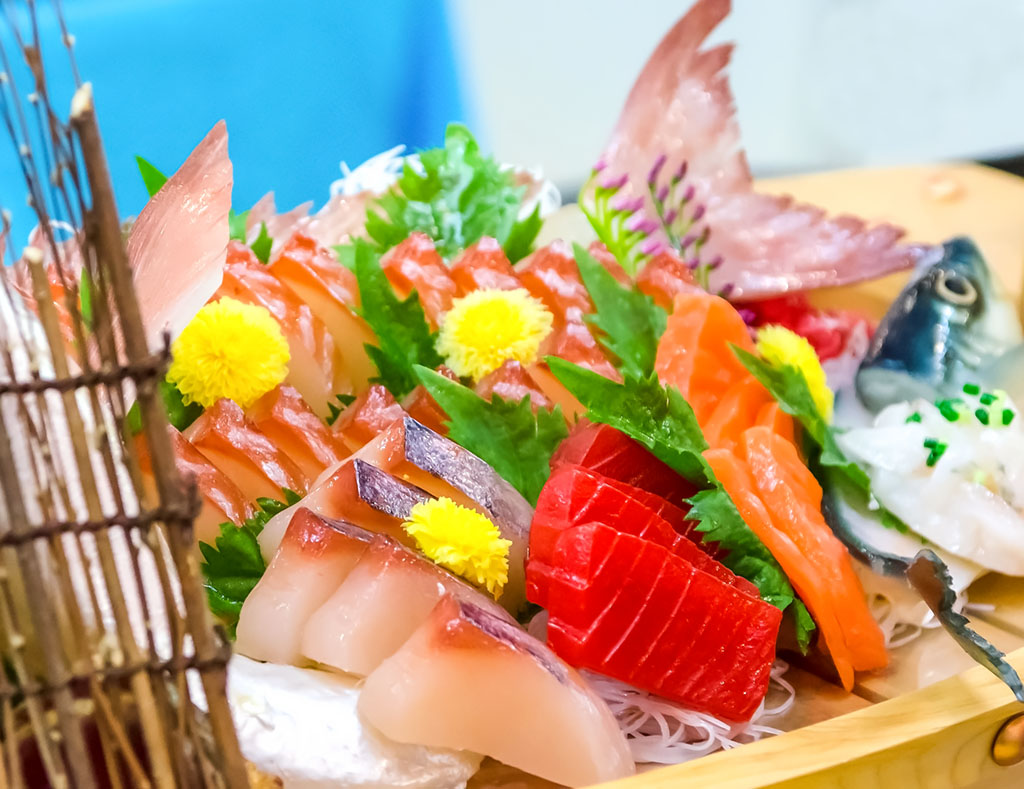
There is no better place to be in Asia, if you’re into fresh and raw seafood.
If so, what is have in mind in Sashimi, considered by chefs to be the finest and most exquisite delicacy in Japanese fine dining. Served before the main course in formal meals, Sashimi can be eaten as it is or after a quick dip in soy sauce mixed with condiments such as wasabi paste and ponzu. Outside of fresh raw seafood, Sashimi could also be made using other fresh ingredients. For example, Kumamoto is famous for its Basashi i.e. raw horse meat presented Sashimi style.
The following are some of the most popular seafood used in Sashimi dishes:
- Maguro (Tuna)
- Sake (Salmon)
- Saba (Mackerel)
- Tai (Sea Bream)
- Hamachi (Yellowtail)
- Tako (Octopus)
- Ika (Squid)
- Hotate (Scallop)
- Ebi (Prawn)
Japanese Curry (カレー)
Japanese-style curry has quite an unusual origin story. It was introduced into the country in the 19th century and famously served by the Imperial Japanese Navy to its forces to prevent beriberi.
Over time, the dish became so popular, stores throughout the nation began selling curry powder and roux. The enduring popularity eventually resulted in the dish achieving status as a national dish.
Today, curry continues to be widely available at restaurants big and small. Typically served with rice, you could also opt for your dish to include breaded deep-fried meat cutlets, omelet, seafood, or even cheese.
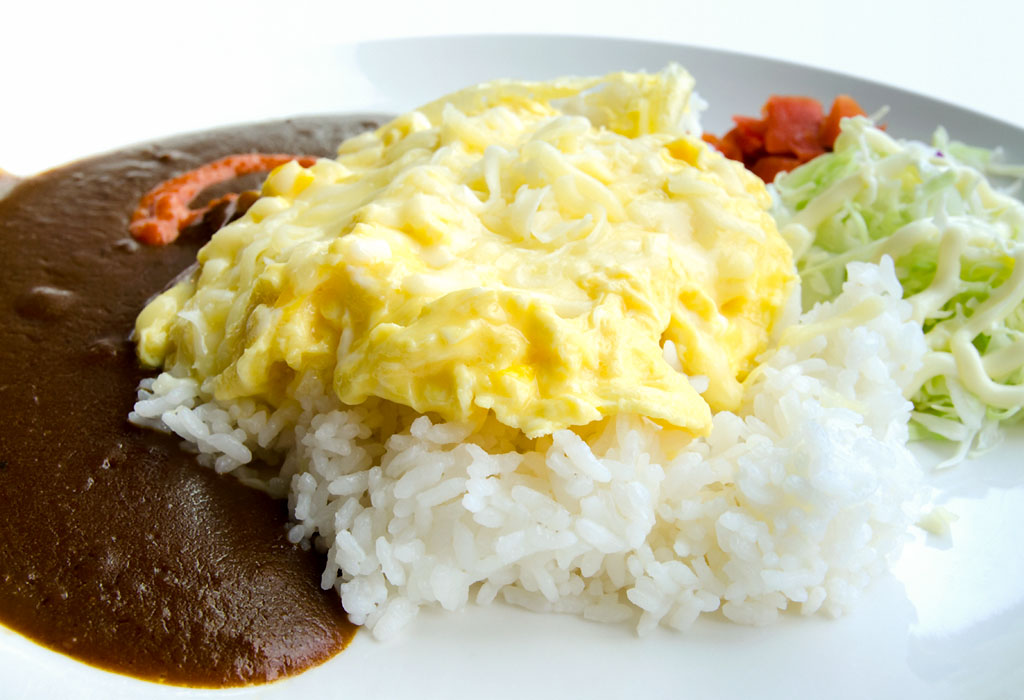
As a testimony to its popularity, every Friday is curry day in the Japanese Maritime Self-Defense Force.
So it’s said, no restaurant, or household, has the same recipe for curry too, as each would have their own “secret ingredients” to add to the base powder. Ingredients that include chocolate, fruits, or other spices.
And in Hokkaido, you could also try Soup Curry! A hybrid of the above-mentioned Ramen and curry, this is one warming dish simply perfect for the northern island’s frigid weather.
Taiyaki (鯛焼き)
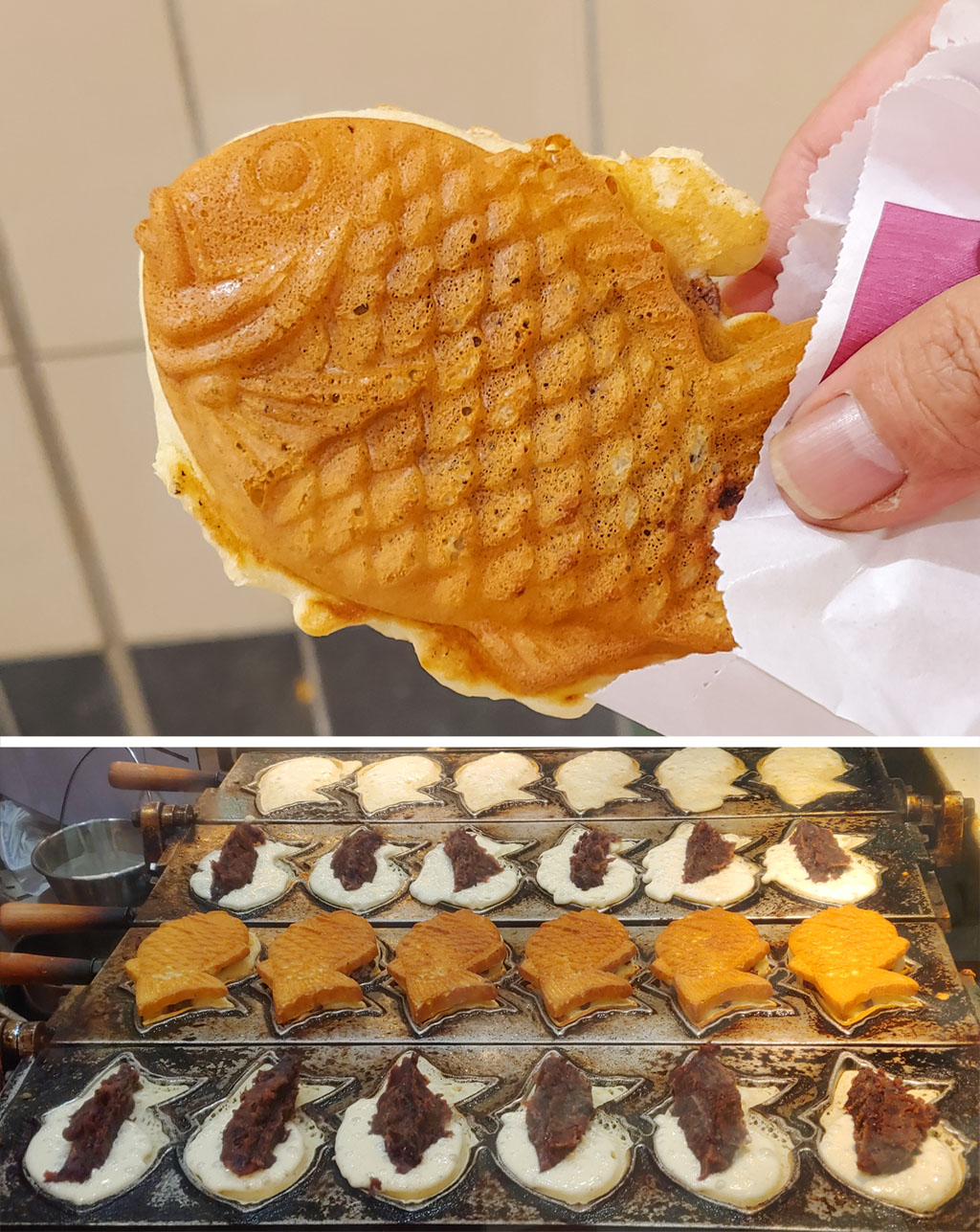
Taiyaki is one of the most unusually shaped snacks of Japan. One that is not at all fishy in taste.
Here’s a snack that could be considered as the perfect hybrid of two ingredients Japanese cuisine is associated with. Namely, fish and Anko i.e. red bean paste.
Well, there’s no fish at all in it. Instead, it’s a cake in the shape of a sea bream (Tai) that’s filled with sweetened red bean paste. Or other sweet pastes like custard, chocolate, or cream cheese.
A must-try Japanese street food, Taiyaki can be easily found at popular tourist spots such as Tsukiji Outer Market and in supermarket cooked food sections. In either case, the snack is always made on the spot with customized iron plates. Watching the baking process, while waiting for one, will thus provide for an interesting photo opportunity too.
Natto (納豆)
Natto, or Japanese fermented soybeans, is an acquired taste, one that divides even Japanese folks. Whether eaten as a side dish or as a Sushi ingredient, the distinct smell of Natto, akin to aged cheese, could be a turn-off. The gooey textile could likewise be unpleasant.

Rice with Natto is a most nutritious Japanese breakfast. That is, if you’re adventurous enough to try it.
If you’re into strong-smelling food, though, or are at least adventurous enough to try, know that Natto is actually quite mild in taste. When mixed with soy sauce or eaten with rice, the unique flavor could even be appetizing for some.
Furthermore, Natto is known to be highly nutritious, with high amounts of nutrients such as Vitamin K1, Copper, Manganese, Iron, and so on. If you’re fine with the taste, you could consider bringing some home with you. Natto sold in ready-to-eat packs, complete with sauce and garnishes, are widely sold at supermarkets and convenience stores.
Soba (そば)
Soba are thin buckwheat noodles, and is one of the signature noodles in Japanese cuisine. A culinary institution in itself, Soba can be eaten in a variety of ways and is served in both affordable restaurants and premier ones. Culturally, it is also a tradition for many Japanese to eat a bowl of Soba noodle soup upon the arrival of a new year.

Well-made Soba noodles has a distinctive rustic fragrance and taste. Utterly uplifting whether eaten cold or with soup.
For travelers, the most commonly seen versions would be Yakisoba i.e. Soba fried with sweet sauce. Like Takoyaki, this affordable meal is widely sold throughout cities and at Matsuri fairs.
Outside of Yakisoba, Zaru Soba, or chilled Soba noodles, would be something to consider having after a long hot day of sightseeing.
Last but not least, some restaurants pride themselves on handmade Soba. They might even have counters showcasing their chefs hard at work making the noodles. There are few culinary experiences quite like slurping up a bowl of fragrant Soba, minutes after watching their creation.
Tonkatsu (トンカツ)
Tonkatsu is Yoshoku, or Japanese-style western food. Very simply, it refers to deep-fried breaded pork cutlets.
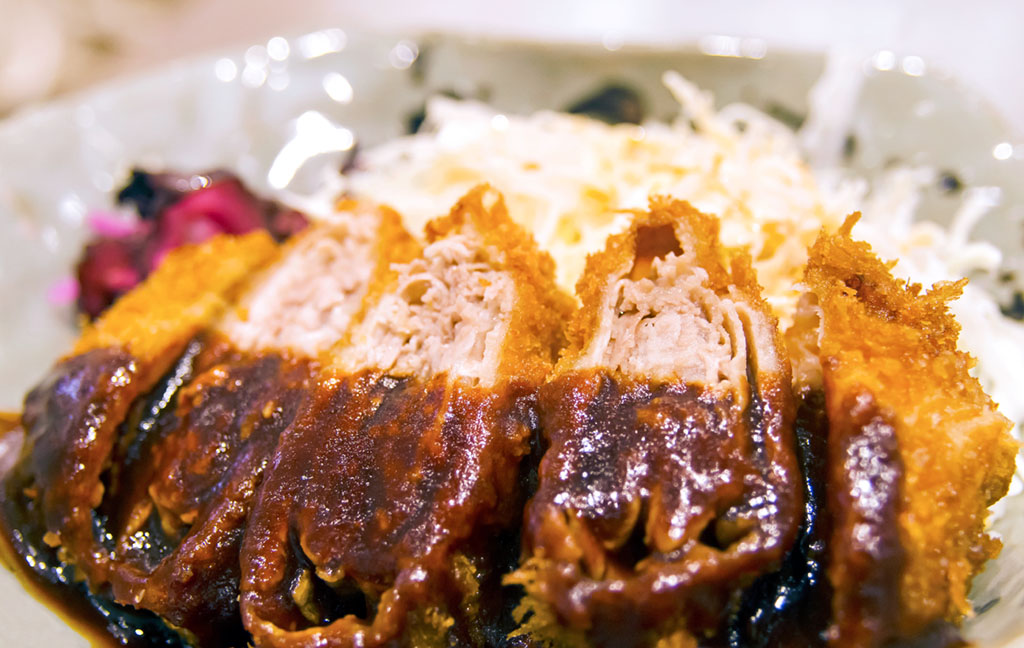
Tonkatsu Nagoya Style i.e. with Miso Sauce drizzled over the cutlets. A must-try when in Nagoya.
Unlike Tempura, though, Tonkatsu cutlets are a rich orange-brown in color. Thickness and inner juiciness of the cutlets are also prized, and at specialty Tonkatsu restaurants, you can decide on whether to have a fillet or a loin cut. Or opt for more premium pork such as kurobuta i.e. black pork.
Tonkatsu could at the same time be enjoyed in a variety of ways. At restaurants, they are served ala carte, with rice, with curry, or when in Nagoya, drizzled with miso sauce. Finally, Tonkatsu sandwich packs are a yummy and filling way to travel with! Just one pack is often enough to suffice as lunch.
Onigiri (おにぎり)
Speaking of Japanese travel food, there is none as popular or as convenient, or as unique, as Onigiri. These being triangular pressed rice wrapped in seaweed, and with some sort of preserved seafood or vegetable filling.

No time for a sit-down meal? No problem, just bring along some Onigiri.
A staple at convenience stores throughout the country, Onigiri could be eaten at any time of the day. They don’t even have to be warmed beforehand too. In fact, some Japanese would say the rice tastes better when chilled.
One thing to note, however. If you’re buying from a supermarket or convenience store, this must-try food of Japan is uniquely wrapped, in a way that is meant to allow easy enveloping of the rice with the seaweed. For the uninitiated, it could be pretty baffling albeit fun figuring how the process is supposed to be. You might want to take a look at this video beforehand before trying.
Miso Soup (味噌汁)
If you’re ordering a set meal in a Japanese restaurant, chances are, your order would be served with a bowl of steaming Miso Soup.

In Kaiseki-style banquet meals, Miso Soup could be served with a variety of premium seafood to reflect the seasons.
A traditional soup made from dashi stock and miso paste, Miso Soup usually comes with small slices of wakame (seaweed) and tofu. At premium restaurants, more premium ingredients such as Asari clams and shrimps might also be included. In these cases, it is typically to reflect the ongoing season or local delicacies.
Light and appetizing, and with a distinctive “Eastern” taste, Miso Soup is near-always served in a Japanese-style bowl. To cup one and slowly sip on the savory broth could thus be a most oriental moment.
Sukiyaki (すき焼き)
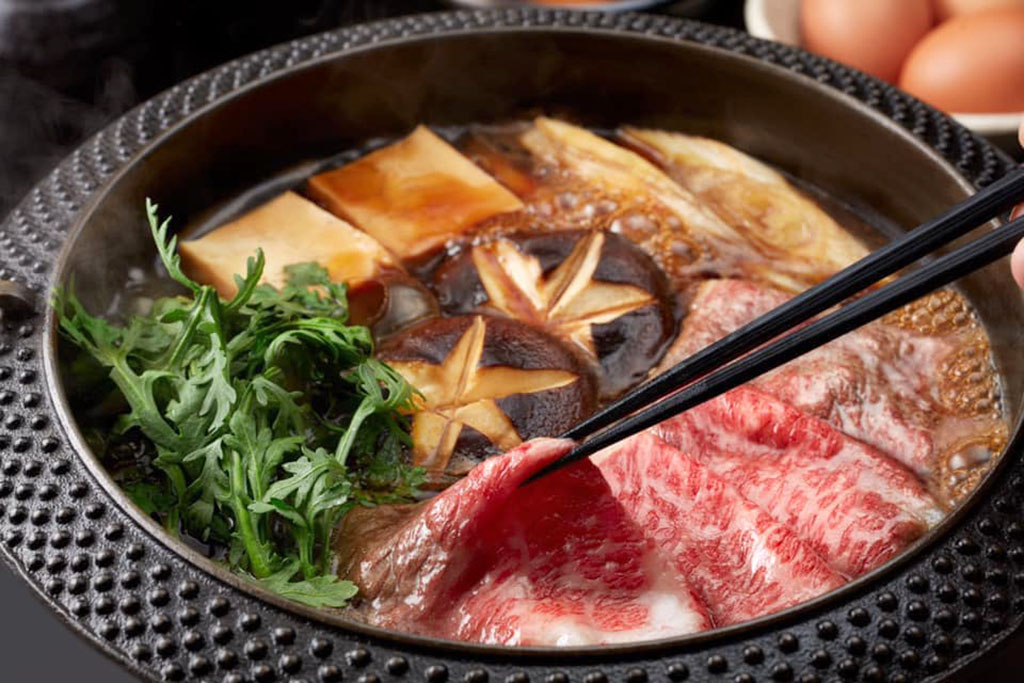
Traveling in Japan during winter? Don’t forget to keep warm with a lavish pot of Sukiyaki.
(Source: https://www.facebook.com/nabezoasakusa/)
Like other East Asian countries, nabemono i.e. hot-pot cuisine is a major part of Japanese dining. As far as the international community is concerned, the most famous nabemono dish would be Sukiyaki. Thanks to the 1961 Kyu Sakamoto song.
A beef dish in which you cook thin slices of beef yourself in a sweetened broth, Sukiyaki was originally a winter dish but could nowadays be enjoyed in any season. The meat is always served with accompanying vegetables like tofu, mushrooms, and scallions too. There would also be an egg for you to mix into the broth or eat semi-raw.
Of note, Sukiyaki is often confused with Shabu-Shabu. The main differences are that Sukiyaki uses a sweeter broth, with beef slices also thicker.
Edamame (枝豆)
Very simply, Edamame is steamed or boiled soybean pods. You don’t eat them whole. Instead, you peel away the pod and eat only the beans.
Slightly salty because of the way it is prepared, Edamame is classic drinking food in Japan, although they are frequently served as finger food in restaurants too. Nutritious, gentle in taste, and fun to peel, you might find yourself getting addicted to these snacks in no time. Naturally, when watching movies in your hotel or chatting with fellow travelers, this must-try food of Japan makes for the perfect healthy snack too.

Steamed beans might sound unappetizing to you. But give it a try, especially with drinks, and you’d know how addictive Edamame can be.
Karaage (から揚げ)
Do you like fried chicken? Are they the perfect snack or street food for you?
If so, you’d love Karaage.
Originally referring to marinated chicken that’s fried to a light brown, Karaage nowadays uses a variety of other meats and seafood. Commonly sold at supermarket food sections and convenience stores, this is a snack you could easily buy and munch on for just a few hundred yen. The perfect savory snack to brighten your day when the tedium of sightseeing gets to you.

Crispy Karaage chicken. A must-try side dish and snack.
At Yoshoku restaurants, Karaage is also usually available as a side dish. In such cases, it would be served with dips, lemon slices, and occasionally, cabbages. Lastly, many regions have their own unique take on this must-try food. For example, the Nagoya version is prepared using chicken wings that are coated with a sweet sesame sauce.
Gyoza (ギョウザ)
Introduced into Japan from China during the early Showa Era, Gyoza is Japan’s version of Asian pork dumplings.

Gyoza is the perfect side dish when having Ramen. Or as a street snack.
Unlike the Chinese versions though, Japanese Gyoza are almost always pan-fried and feature a stronger garlic and chives taste. A common side dish at Ramen restaurants, Gyoza is also served with a dipping sauce made from chili oil and vinegar. In other words, this is a strong-tasting dish. A wonderful complement when slurping on a bowl of steaming Tonkotsu Ramen.
In addition, Gyoza could often be bought at street fairs. As long as you don’t mind the lingering aftertaste, or have something to wash them down with, these must-try snacks are a sheer delight to enjoy throughout the day.
Yakiniku (焼肉)

There is nothing quite like enjoying a Yakiniku meal with family or friends. (Source: https://www.facebook.com/taian.mishima/)
If you are in a carnivorous mood and have time to spare, a Yakinuku restaurant is the place to head to. Doubly so if you’re with good friends.
The Japanese version of tableside barbequed meat, Yakiniku restaurants are lively and colorful places, making them perfect for a hearty feast day or night. Practically all restaurants would also have a wide selection of meats for you to choose from, including different cuts and grades of prized Wagyu beef, should you be willing to splurge a little.
Inspired by Korean-style tableside barbeque, many Yakiniku restaurants serve Korean side dishes, making a visit a great opportunity to sample Korean cuisine too. As for cost, a basic Yakiniku meal typically cost around 2000 yen per person. Naturally, if you opt for premium ingredients, the cost will significantly increase.
Oden (おでん)
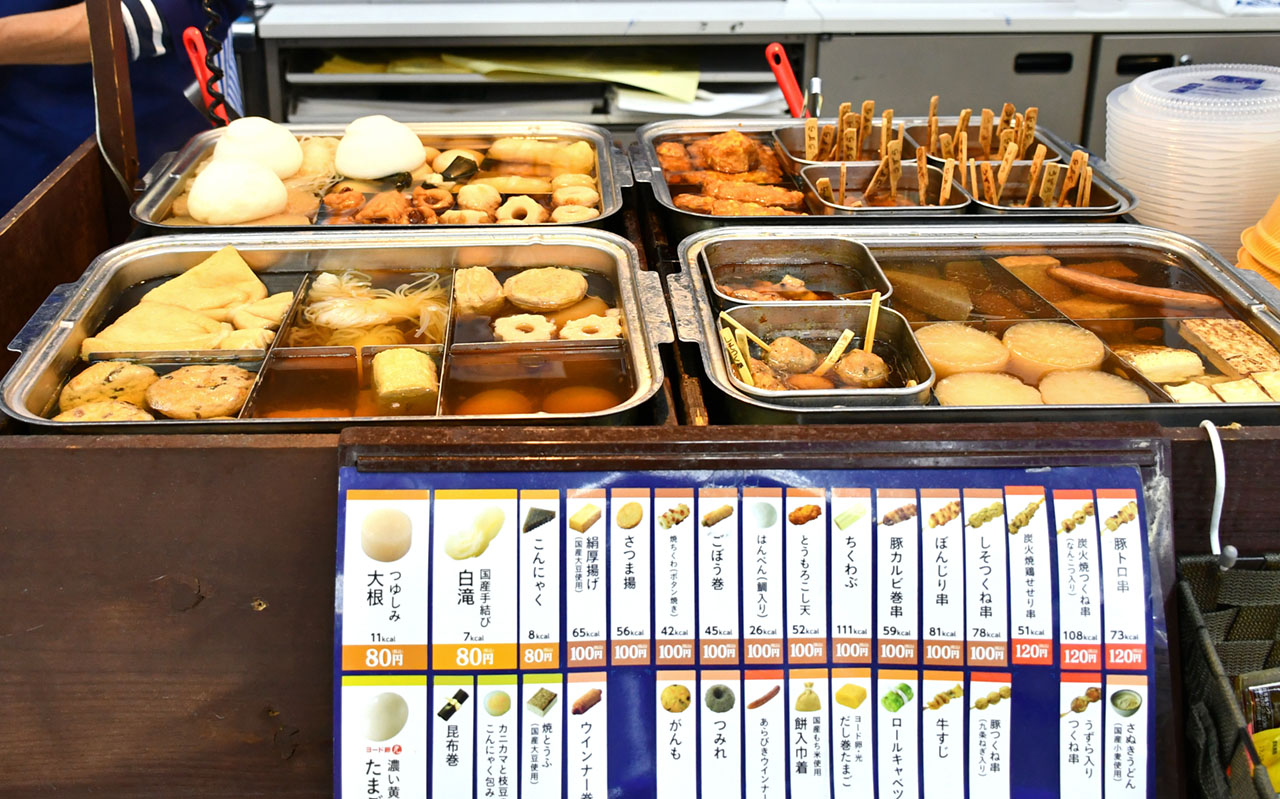
Oden counter at a Japanese Konbini i.e. convenience store. With skewer listing and price.
Oden refers to skewered seafood, meat, or vegetables cooked in a dashi-flavored broth. A common sight at many convenience stores, the skewers can be brought individually or in a bunch, making Oden equally suitable for a hot snack or a full meal.
There is usually a significant variety of choices too; in other words, for the unfamiliar, it could be a mini-adventure deciding what to have. Finally, Oden outlets will always keep the skewers simmering in pots. In the case of 24-hour convenience stores, Oden is thus a traveler’s best choice for an instant hot supper. Be sure to follow us on Facebook, Instagram, Twitter, and Pinterest for more fun stuff!

Ced Yong
A devoted solo traveler from Singapore who has loved Japan since young. His first visits to the country were all because of video game and Manga homages. Today, he still visits for the same reasons, in addition to enjoying Japan’s culture, history, and hot springs.








